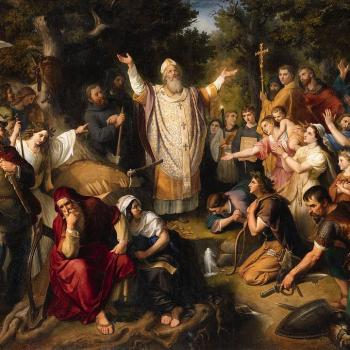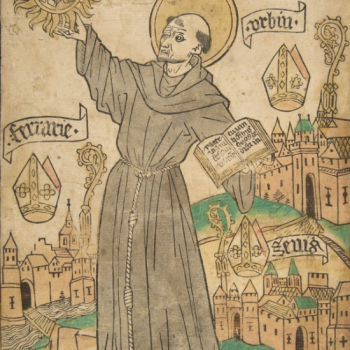I have heard of Stephen Mansfield for a number of years. He became well known after publishing The Faith of George W. Bush.
Although I had never read it I heard quite a great deal about it. On one side I head voices condemn it as propaganda, and a revisionist account of American history. On the other hand people held it up as proof that there was a committed Christian in the White House, which was a good reason to support President Bush. As the years went on Mansfield
wrote books many other controversial topics and figures including Pope Benedict XVI
, the American soldier
, and Barack Obama
. I was surprised and intrigued when I came across Mansfield’s new book ReChurch
(Tyndale / Barna, 2010). This seemed like a departure from most of the work I had seen by Mansfield, and was finally something I thought I might benefit from taking the time to read.
Chapter Four marks a decisive turn in the book. At this point Mansfield calls readers to examine times of hurt in terms of what they have gained through this ordeal. He begins to help the hurt to form a story through which they can trace an arch of redemption for themselves. The story is fleshed out in Chapter Five; Mansfield introduces the antagonist. In the story of hurt the reader is retelling in their mind there is an evil force, and that force is the devil. The devil is seeking to trap the person who has been hurt using bitterness. There is also a hero introduced, the Holy Spirit who leads us into compassion and forgiveness. Chapter Six brings the story into the present. The protagonist (you and I) is now faced with the reality that everything is still not peachy keen. Mansfield seeks to give the reader some weapons to continue fighting the fight to complete healing.
As I mentioned at the onset of this review the book is incredibly individual centric. That is because the book is more of a book about contextualizing a personal story then discussing the life of the Church. Chapter Seven reminds the reader that at the heart of any good story the protagonist must be about something larger them himself. This, too, is the way of the church. Mansfield uses the phrase “your destiny is fulfilled by investing in the destinies of others.” It is on that note the book ends with a short epilogue that emphasises the hope of restoration in the scripture, and in the church.
I’m not sure how I feel about the book. I have suffered a great many wounds in the church over the years, and much of what was written reflected my own path to forgiveness. The main problem with this book is that it was written to help those who have experienced hurt in the church, and these are the people who are going to be the LEAST interested in picking up a book about it. I suppose that can’t be helped. If people hurt by the church are going to find healing it will require individuals to reach out in love. No book on earth can replace the incarnational injunction of the cross. Although it would be a great deal easier if one could.













